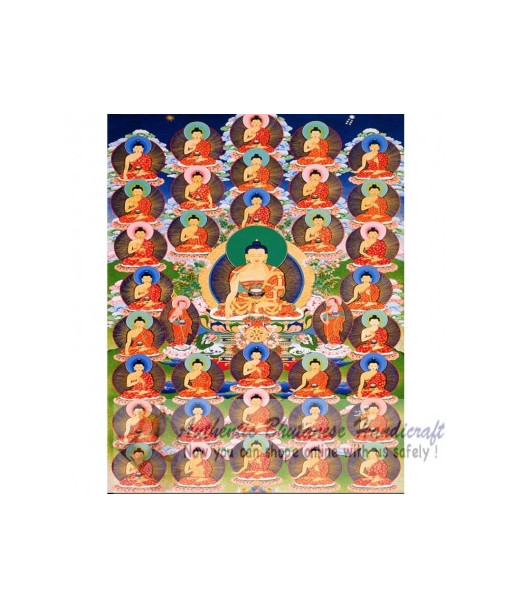- -50%







A Thirty-Five Confession Buddhas Thanka painting is a traditional Tibetan Buddhist artwork that features the Thirty-Five Confession Buddhas, also known as the Thirty-Five Buddhas of Confession and Repentance. This practice is rooted in the Mahayana Buddhist tradition and is used for purification and confession of misdeeds.
 Security policy
Security policy
(edit with the Customer Reassurance module)
 Delivery policy
Delivery policy
(edit with the Customer Reassurance module)
 Return policy
Return policy
(edit with the Customer Reassurance module)
A Thirty-Five Confession Buddhas Thanka painting is a traditional Tibetan Buddhist artwork that features the Thirty-Five Confession Buddhas, also known as the Thirty-Five Buddhas of Confession and Repentance. This practice is rooted in the Mahayana Buddhist tradition and is used for purification and confession of misdeeds.
Key Elements of the Thirty-Five Confession Buddhas Thanka:
1. **Central Figures**:
- **Thirty-Five Buddhas**: The painting depicts thirty-five Buddhas, each representing a different aspect of the path to purification and the removal of negative karma. These Buddhas are often arranged in rows or circles within the composition.
- **Vajrasattva**: Sometimes depicted in the center or prominently, Vajrasattva is a key figure in the practice of confession and purification.
2. **Arrangement**:
- **Visual Layout**: The thirty-five Buddhas are usually arranged in a structured pattern, such as a grid or concentric circles. Each Buddha is typically shown in a seated posture, with distinct mudras (hand gestures) and attributes.
- **Symbolic Background**: The background may include elements such as lotus flowers, flames of wisdom, or celestial patterns to symbolize the purifying and transformative power of the practice.
3. **Iconography**:
- **Auspicious Symbols**: Each Buddha might be surrounded by auspicious symbols, such as the eight auspicious signs (Ashtamangala), which include the conch shell, lotus flower, and wheel of Dharma.
- **Mantras and Prayers**: The thanka may include Tibetan mantras or prayers associated with the confession practice, often inscribed in elegant script around or within the image.
4. **Color and Style**:
- **Traditional Colors**: The painting often uses rich, vibrant colors to highlight the divine nature of the Buddhas. Gold, red, and blue are commonly used to signify purity, wisdom, and compassion.
- **Detailed Design**: The Buddhas are depicted with detailed attributes and serene expressions, emphasizing their enlightened qualities and the spiritual significance of their practice.
5. **Purpose**:
- **Purification**: The thanka serves as a focal point for the practice of confession and purification. Practitioners use it to visualize and meditate on the Buddhas, seeking to confess their negative actions and purify their karma.
- **Remembrance**: It acts as a visual reminder of the Thirty-Five Buddhas and the importance of maintaining a pure and virtuous path.
### Significance:
- **Purification Practice**: The practice involving the Thirty-Five Confession Buddhas is a key part of Tibetan Buddhist rituals for clearing away negative karma and seeking spiritual renewal.
- **Meditation Aid**: The thanka is used in meditation practices to connect with the Buddhas' qualities and seek their blessings for personal transformation and spiritual growth.
This thanka is not only a work of art but a vital tool in the spiritual practices of Tibetan Buddhism, offering practitioners a way to engage deeply with the principles of confession, purification, and repentance.